The idea of promotion and relegation is one of the major talking points of a select group of soccer fans in the United States. In the long run, it seems like MLS and the USL have a difference in opinion of what pro-rel will look like in 20 years. In the short run, anyone believing it’ll happen sooner than that is wishfully thinking.
The scenes were something out of the movie Fever Pitch. Wrexham AFC had achieved promotion from League Two to League One, the third division of English football. The Wrexham fans stormed the field in a wild display of passion and festivity, as their small Welsh club achieved an enormous feat.
The club, which gained Stateside notoriety thanks to actors-turned-owners Ryan Reynolds and Rob McElhenney, has quickly and emphatically climbed the ladder of English football, complete with Hollywood storytelling, news coverage from major outlets, and most importantly, revenue from sponsorship deals with United Airlines, HP, and at one time TikTok and Expedia.
The boost in cash has allowed Wrexham to navigate the waters of promotion football, with access few other clubs in the same division have. Now, the club is two successful campaigns away from the unthinkable — reaching the Premier League.
For a club that is 159 years old and plays in a stadium with just 12,600 seats, Wrexham are far from being Premier League-ready, but the dream for the soccer-mad country of Wales is there and it’s possible.
Many American soccer fans that are against the closed system of MLS point to Wrexham as the primary example of what soccer could be in the United States if promotion and relegation finally makes its way to our shores. But will we ever see that day come?
The Dream of Promotion and Relegation
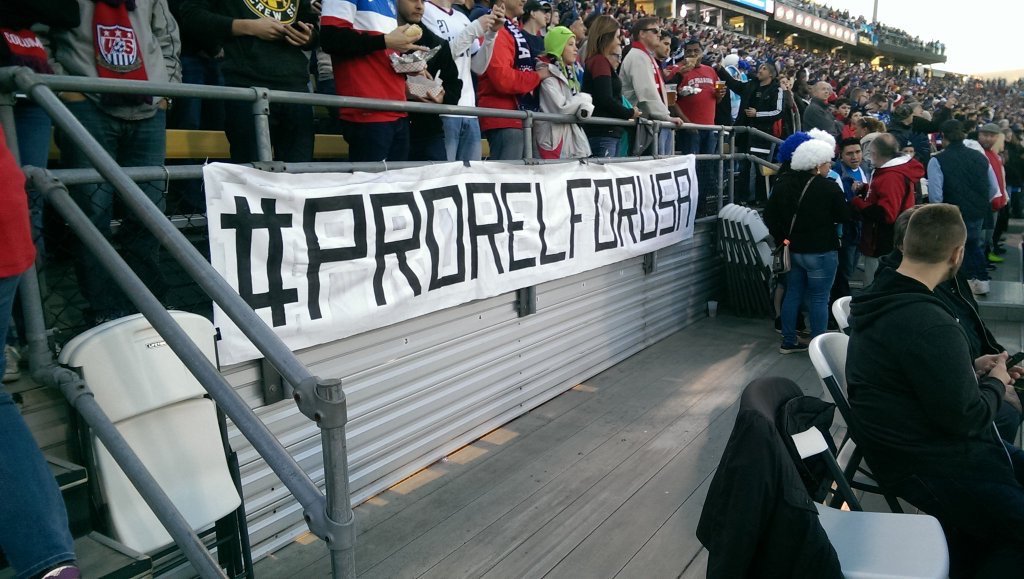
Off the bat, it’s important to note my opinion on this issue. Promotion and relegation is a good thing, but not the only thing that could help soccer overall in the United States.
Of all the ills and needs soccer has in the U.S., promotion and relegation is at the bottom of the list. U.S. Soccer and its whole infrastructure from MLS to USL to the national teams suffers from under-qualified professional coaches and trainers, poor executives, and a youth system that has yielded little results outside of a few exceptions. Most importantly, the entire U.S. Soccer system as whole suffers from greed.
Then there is the big and important matter of television audiences. Neither the United States men’s national team, MLS, or USL have ratings to pound their chests with. In fact, World Soccer Talk reported that in 2023, the USMNT had produced its lowest overall viewership in four years.
In short, the USMNT’s Golden Generation isn’t being watched by many.
Soccer in the United States, on the eve of the 2026 FIFA World Cup, is at a stalemate. Worse yet, the overall soccer fanbase in the country seems to be heavily fractured. From low-blow moves like MLS removing its teams from the U.S. Open Cup, to arguments on social media about MLS vs. European-based USMNT players, there seems to be a strong divide amongst American soccer fans, which has made a niche audience even more niche, since some refuse to watch or embrace the other.
Then there is a significant soccer audience that doesn’t care one bit about U.S. Soccer, MLS, Americans abroad, or a pyramid of soccer. They just want to watch the team or league from the country they are from. Euro or South American snobs lie in this category, though it is not exclusively made up of them. More importantly, however, this is a soccer audience that no one in the Untied States across the board has been able to penetrate.
It all seems that everyone in the American soccer ecosystem is chasing the same buck. No one is trying to structure anything for everyone to drink from the well, which is the main basis in which a pyramid exists in the first place.
So where does promotion and relegation fit into all of this? It’s important to mention the above to come to terms with the rest. Pro-rel may one day happen, but not in the way some fans believe it will. The dream of pro-rel some envision is far from the realities that are being drawn out as we speak.
The USL’s Quest
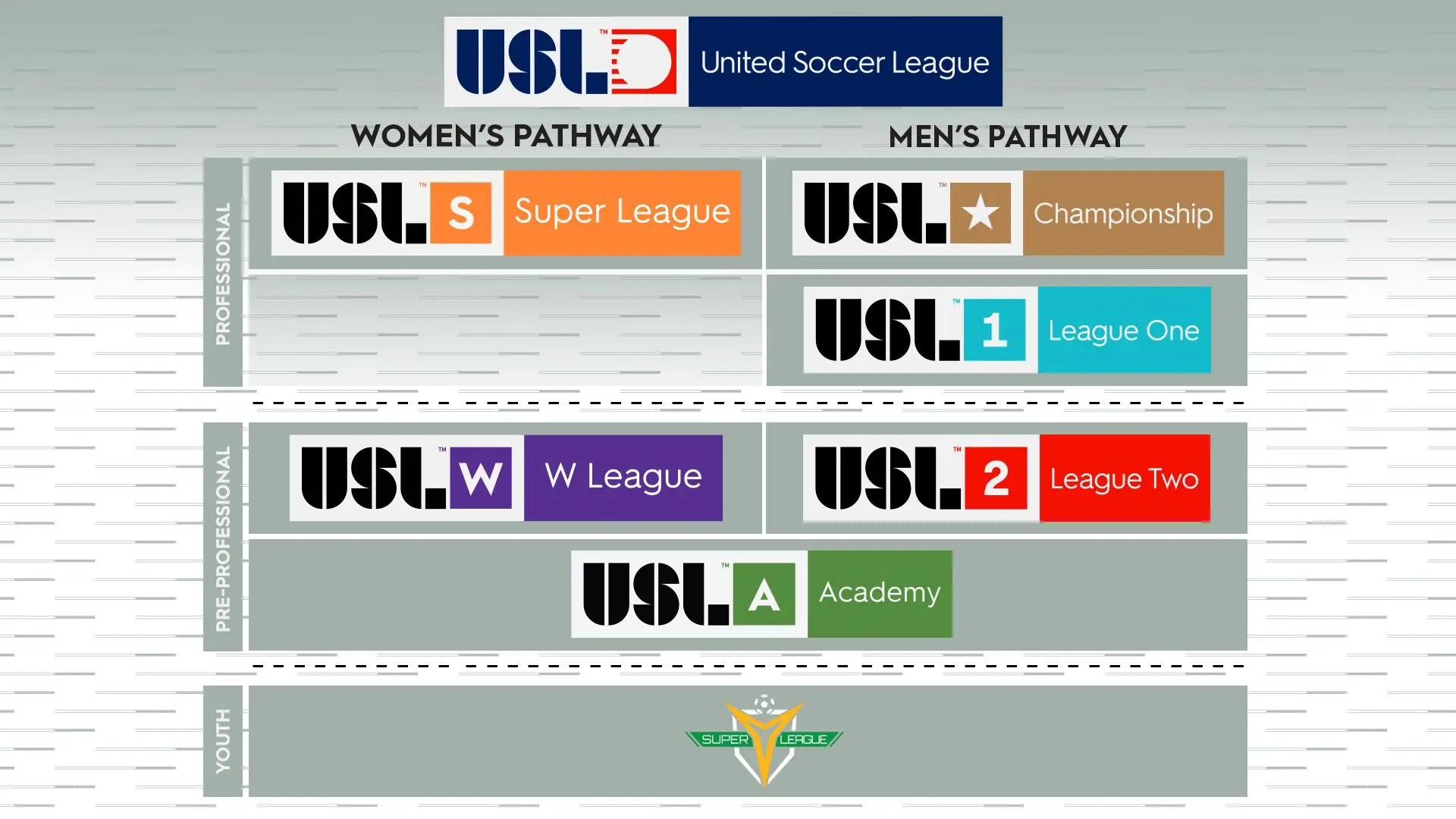
Near the end of 2023, USL president Paul McDonough made a bold announcement. The league would be considering to implement its own pyramid complete with promotion and relegation. The news got the attention of many, but since then, the USL has been mum on pro-rel. In fact, current attendance numbers across the USL’s three leagues suggest it would be financial suicide.
In 2023, of the 24 teams in the USL’s top division, only two teams drew over 10,000 spectators, and a concerning 15 teams drew less than 6,000 fans per game.
With a healthy boost of revenue in its recent CBS TV deal, the USL cannot stand to muddy the waters by adding pro-rel into the mix, when some long-standing owners are on the cusp of finally seeing some real revenue. The league will broadcast 100 games on the CBS platform, an incredible opportunity to tell its story and position its ailing and oblivious franchises to an audience interested in soccer.
The USL is about a “grassroots” movement. It’s an anti-franchise system, but it is not in England. This is the United States, a country where the WWE can out-view some critical NBA playoff matches. The USL has a huge mountain to climb to position itself as something other than a content chip for streaming platforms to add to their portfolio.
The USL, even more so than MLS, is a niche league of a niche sport. Pro-rel in the USL, as of 2024, looks more to be a publicity stunt to appease fans who are anti-MLS than a serious attempt to implement the promotion and relegation system. Especially considering the financial impacts of a club dropping down to a division that barely draws over 1,000 fans per game.
Also, the push for pro-rel in the USL is an attempt to be an alternative to MLS, not a partner. Basically, the USL is a renegade first division soccer league trying to set up its own small shop and get a bite of the pie that MLS is trying to gobble up.
MLS and Pro-Rel
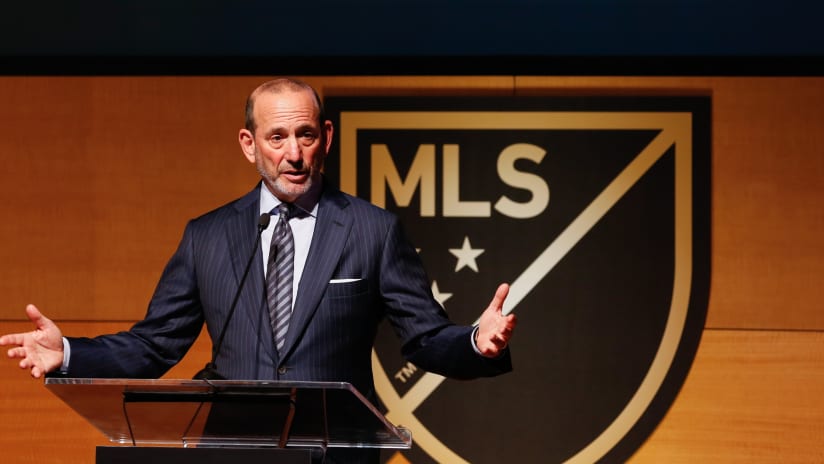
In many ways it is mind boggling to see fans who follow soccer in the United States scream and yell for MLS to have an open pyramid, especially considering that the league is yet to finish one of its principal objectives: Expansion.
Since 2017, the league has made it clear that the revenue that comes with expansion, not to mention the sheer size of the United States, was too big to stop at just 18 or 20 teams. The goal, given the high demand of expansion, is 30 teams.
After reaching that target number, MLS will have to blaze a different trail for new teams to enter the league if it wants to keep the number at 30.
MLS Next Pro is a trial run of positioning a lower division of the league, and seeing how MLS operates, it’s almost a given that in 10 years’ time MLS Next Pro will become a sort of MLS 2.
Financially viable clubs could then in theory enter the league via MLS 2, and when the league feels secure in its finances, the idea of promotion and relegation could realistically be placed on the table.
However, MLS would have to dismantle its single-entity structure in order for this to happen, as no owner that paid an expansion fee worth hundreds of millions of dollars would in their right mind vote in favor for the risk of being demoted and instantly devalued.
In addition, MLS commissioner Don Garber has been clear that he doesn’t see pro-rel as something that will happen under his watch. But that isn’t to say the next person in line won’t play the pro-rel card as a gimmick to push the league forward.
MLS has never been shy to use a gimmick — whether it was the wild penalty shootout from its early days or bringing in David Beckham and Lionel Messi under unique contracts. Promotion and relegation could very well be the next one for it to employ.
Understanding the American Sports Culture
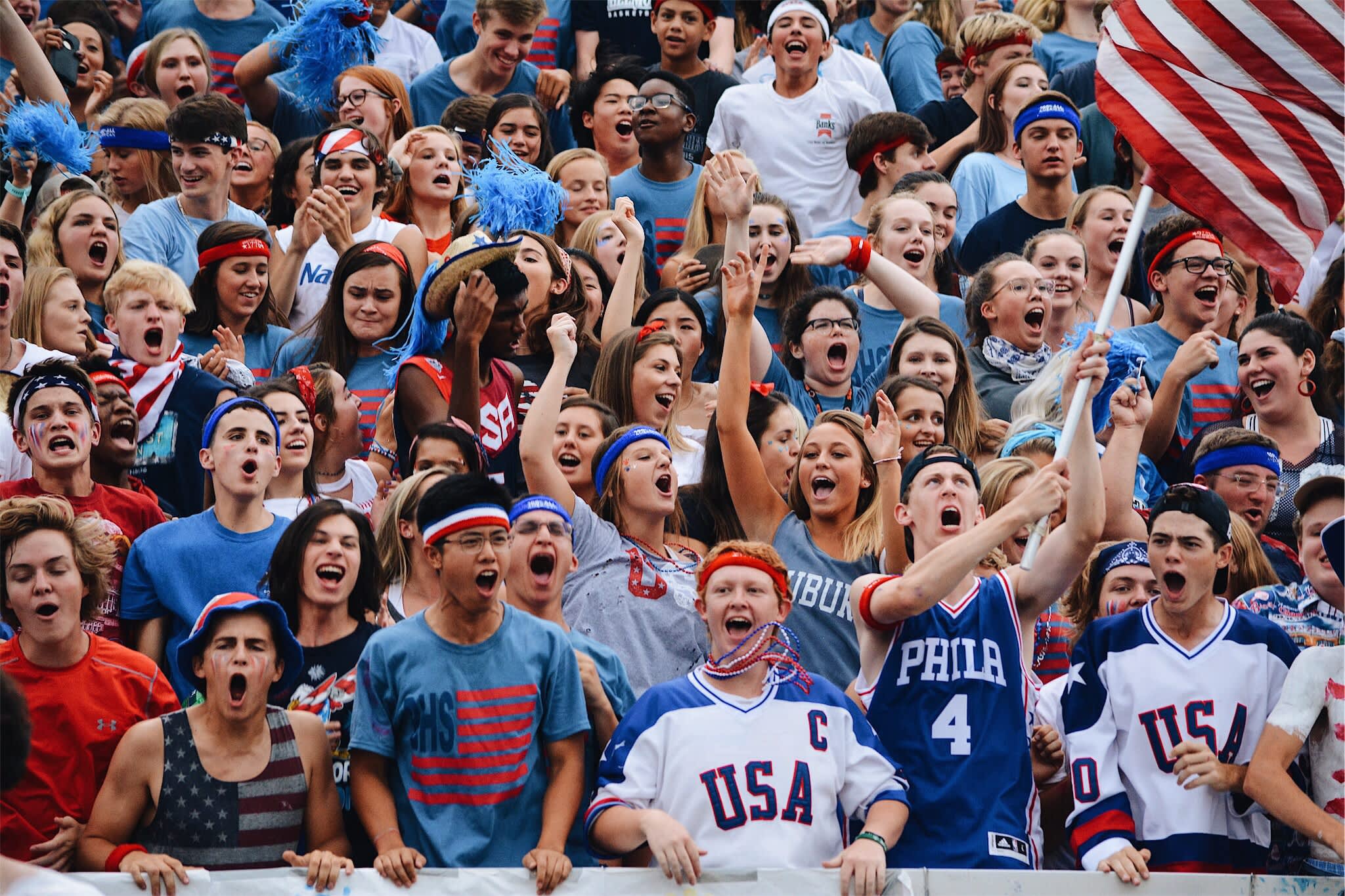
The advocates of pro-rel in the United States at times have a one-track viewpoint on the subject: the soccer one. Yes, when it comes to the idea of a fluid soccer pyramid, it makes sense for the sport, but those same advocates forget one critical thing…the American sports viewer.
The United States is not a country made for the minor leagues. Every major American professional sports league outside of soccer is without question the best in its respective sport. The best boxing and MMA fights take place in America, and three out of the four golf majors are Stateside as well.
The Lakers, Yankees, Cowboys, and Rangers are what overflow the airwaves and the water cooler talk at the office the next day. Simply, culturally, there is no room for minor league teams.
The evidence is in the numbers. Phoenix Rising won the 2023 USL Championship final, and played in front of an average home crowd of just over 7,400. The least-attended MLS team in 2023 was the Houston Dynamo, who drew in an average of 15,027.
If Phoenix was promoted to MLS, there surely would be an increase in attendance numbers, but the club would need to more than double its average from 2023 to match just the smallest of MLS crowds — and that would be no easy task.
The So-Called American Soccer Pyramid
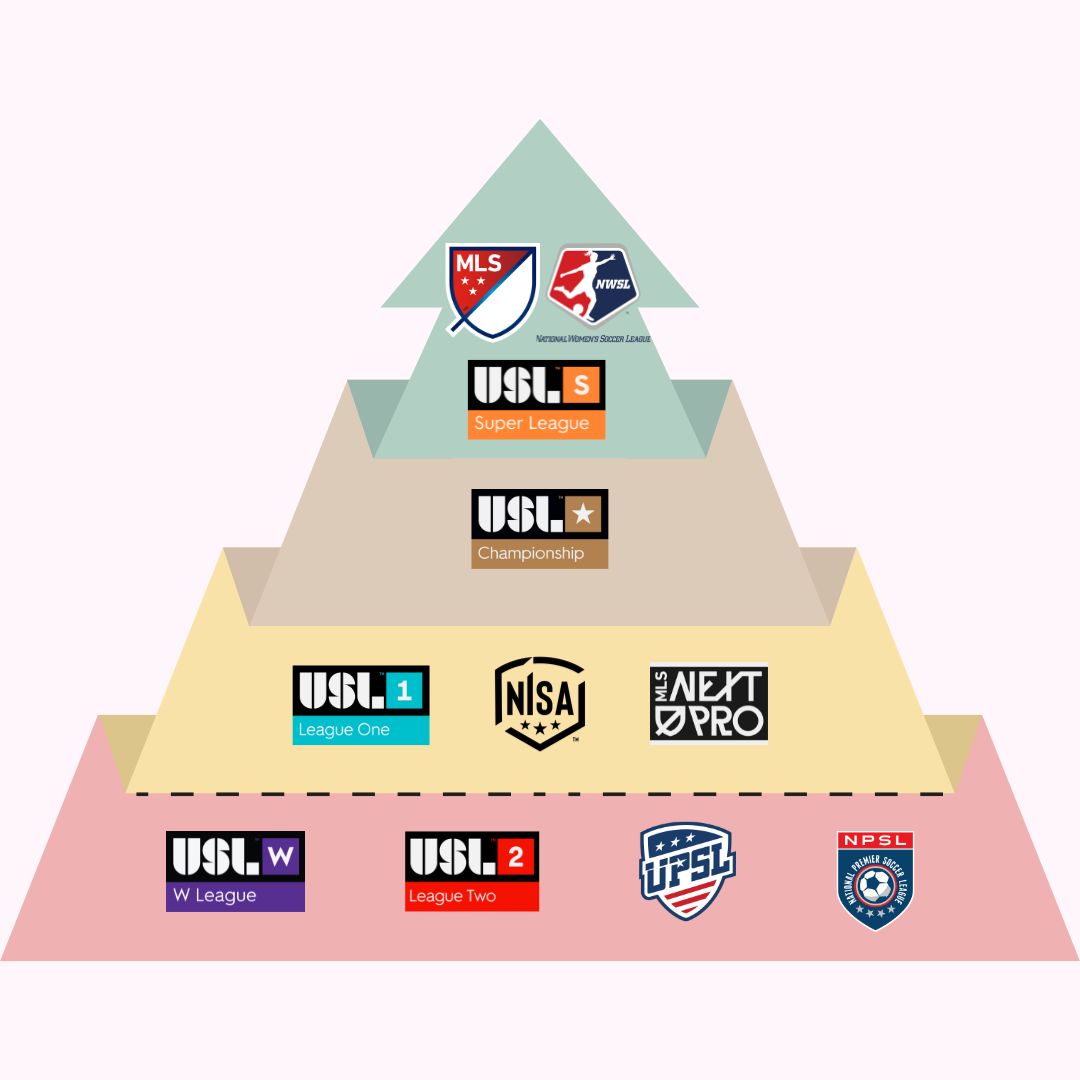
The bottom line over talks of a pyramid in the United States for soccer is just that: talk. It’s a pipe dream that’s far from a reality.
MLS, with all of its flaws, is the best attempt at professional soccer the United States has ever created. The NASL of the 1970s was far from serious. The New York Cosmos and Chicago Sting were exceptions to a league that by 1982 had begun to fall apart due to poor expansion, a dead TV deal, and overspending.
Everything that followed or preceded the NASL until the arrival of MLS was never anything professional. It can hardly be called semi-pro. From teams looking to make a quick buck with indoor soccer to those constantly folding or being absorbed, soccer until MLS was never a serious sport in the United States. Of course there were outliers like the Seattle Sounders and Portland Timbers, who both survived various leagues but in the end were very eager to shed their minor league status to gain entry into MLS.
Despite what anyone might think of the play on the field and the penny pinching off of it, MLS is finally on safe ground. It’s a league that today can take a few lumps and kicks and survive. That was not the case in 1999, 2002, and 2006, where the league was close to death on three occasions.
The future of the soccer pyramid in the United States will be what MLS deems it to be, sadly, as the league continues to expand across the country, absorbing the locations that best suit its needs. Some USL teams will most likely either join that version of MLS or die on their swords.
In basic English, promotion and relegation will come to the United States the day MLS is ready for that step. Anything else is just a publicity stunt that has all the criteria to end badly.
Soccer is still a niche sport in the U.S. The country as a whole in large aspects is still trying to understand the difference between a wing back and a winger, and some reports are still confusing the MLS Cup with the World Cup. Trying to explain that the last place teams lose their standing in the league is way down the road.








